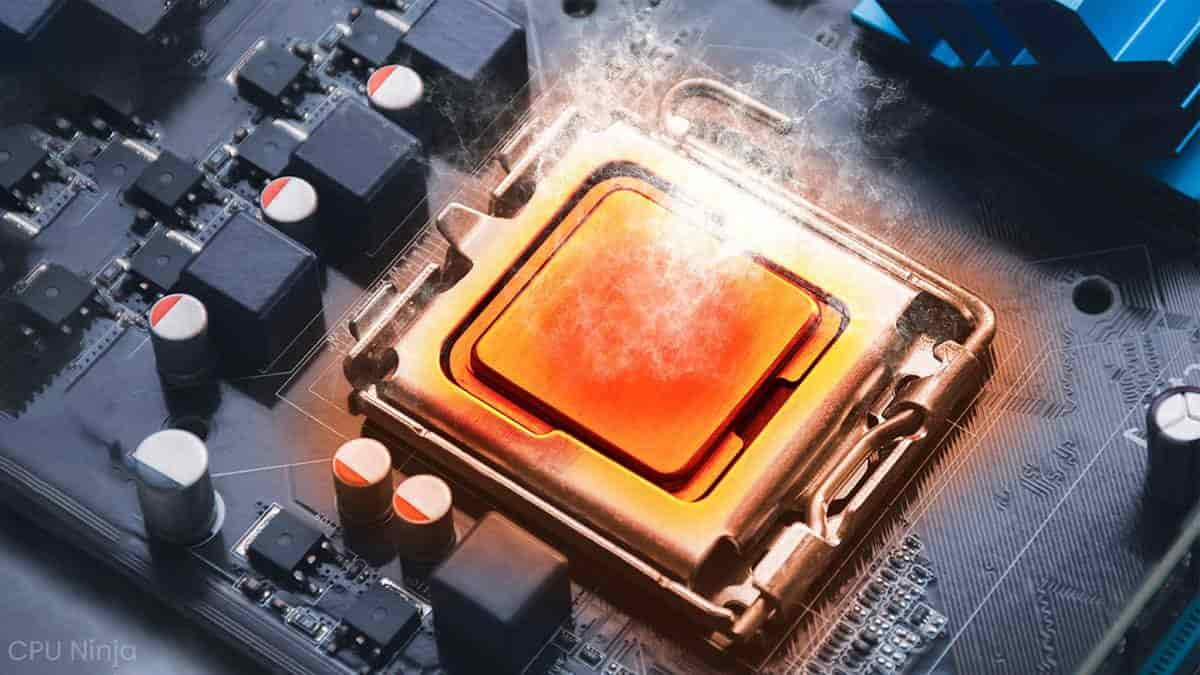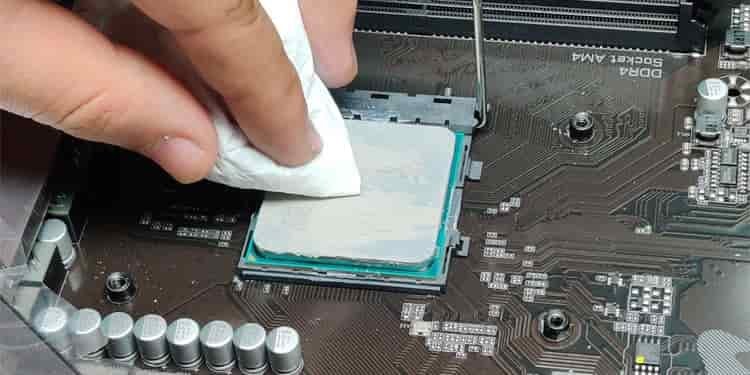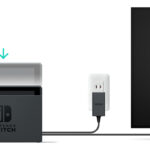Have you ever heard the loud fan noise coming from your CPU? Or have you recently noticed that your PC runs slower than usual? If so, it’s likely that your CPU is reaching an over temperature and needs to be fixed! You may find that even after multiple attempts at rebooting your computer and checking cables, wires are properly connected, nothing works to get rid of the warning message pointing to your overheating CPU!
Don’t worry though— you can fix CPU overheating in a few simple steps and within minutes. In this guide, we will give you the rundown of how to quickly fix the CPU over temperature error and get your PC back running the way it should. Make sure to do each step carefully and check for improved performance after each one, as this will help make sure that everything is running smoothly in no time.
What is a CPU Over Temperature Error ?
It occurs when the processor is operating at a higher temperature than it was configured to handle. Heat can damage the internal components of a computer, and overheating processors are particularly susceptible to permanent damage if temperatures climb too high. As such, most CPUs come with built-in safeguards that reduce their clock speed when they get too hot, or cut power entirely as needed in order to prevent further head buildup in an effort to save the component.
If a user encounters an over temperature error message, it is recommended they look into solutions such as ensuring their system runs in cool, well-ventilated rooms or investing in PC cooling solutions like extra fans and vent covers.
What causes a CPU Over Temperature Error Randomly?
There are many potential causes of this error – from dirty or damaged coolers and heat sinks to high input voltage due to overclocking, the possibilities can be overwhelming. Here is a breakdown of the most common causes of this error.
Improper Fan Speed
The most common cause for a CPU over temperature error is an improperly functioning fan. The fan helps to keep your computer cool by blowing away hot air from inside the case, so if it’s not working properly, heat can quickly build up and cause an issue. To check if your fan is working correctly, open your computer’s case and observe its speed — it should be running at full speed or close to it. If not, then you may need to replace it.
Dirty or Damaged Coolers and Heat Sink
Another common cause for CPU temp too high is dirty or damaged coolers and heat sinks. These are components responsible for dissipating heat away from the CPU and keeping it cool enough to operate without any issues. Over time, they can become clogged with dust and dirt, which reduces their effectiveness in cooling the processor down. Cleaning these components regularly is important to ensure they remain in good condition and can do their job properly.
Dried Out Thermal Paste
Thermal paste is another important component when it comes to cooling your CPU down —it acts as a bridge between the processor and cooler/heat sink, allowing for better heat transfer between them. But if this paste dries out over time due to incorrect usage or prolonged exposure to high temperatures, then it won’t be able to do its job effectively anymore — resulting in higher than normal temperatures for your processor. Replacing thermal paste regularly is recommended for optimal performance.
Blocking the Computer’s Vents
Blocking one or more of your computer’s air vents can also lead to a CPU over temperature error as well as other issues such as slowdowns or crashes due to overheating components inside the system unit. Make sure all vents are clear of dust and debris so that air can flow through freely without any blockages in order to maintain optimal performance levels on your machine.
High Input Voltage/Overclocking
High input voltage can cause an issue with your processor if it is not designed to handle it properly. This is often seen when users try to “overclock” their processor by setting higher voltages than what is recommended by the manufacturer. This process requires caution as it can lead to instability and other problems such as overheating if done incorrectly. It is best to leave it for expert users who understand what they are doing!
How to tell if your Computer is Overheating?
Overheating is a serious issue for computer systems, as it can lead to permanent damage and expensive repairs. Many individuals overlook the warning signs that the CPU is overheating, because the symptoms do not always indicate a problem with the temperature. It’s important to pay attention to when your computer experiences any of the following:
- Unusual fan sounds
- Crashing or hanging during use
- Blue screens at any time
- Constantly restarts or shuts down unexpectedly
- Increases or sustains a high temperature while in an idle state.
If you experience one or more of these conditions, monitor your CPU’s temperature before considering other problems.
Fixing CPU Over Temperature Error in 6 Steps
Solution 1: Keep It Clean
Keeping your CPU clean is an important step in helping to avoid temperature errors. A few simple steps can have a big impact on maintaining the health of your CPU. To start, use a can of compressed air to blow out the dust from your CPU heatsink. This will help increase air flow, decreasing stress and temperatures — improving performance in return. Additionally, using a larger PC case with multiple fans could also prove beneficial for pulling more heat out of the case before it has a chance to build up and cause an over temperature error.
Solution 2: Check for Adequate Ventilation
To avoid CPU temp too high issue, you need to make sure it has adequate ventilation; it’s important to leave enough space between your CPU and any other nearby heat sources like radiators, electric heaters and windows. Crowding the machine can cause air circulation to be blocked, preventing the necessary cooling and causing overheating issues. Leave at least a few inches between your CPU and these objects to allow for maximum airflow.
Solution 3: Try To Keep Your Room Cool
Ensure that the room temperature where your PC is located is cool and comfortable. Fans draw in a set amount of air, expel it, and then cycle out. If the temperature of your environment is too high, it puts more strain on your components, making bits run hotter than intended and thus leading to CPU over temperature error popping up on your screen. Always keep your room at or below about 75º Fahrenheit for an optimal computing experience. This will give you fewer chances for defective components due to overheating and greater performance overall.
Solution 4: Check Thermal Paste and Reapply If Needed
Thermal paste helps to increase the performance and lifespan of your computer by creating better heat transfer between a CPU and its cooler. It’s typically made up of metal, ceramic and silicon compounds so it’s important to choose high-quality products from renowned brands. To check if you need new thermal paste, unscrew the CPU fan and heat sink to examine them closely. If the paste appears to be dried or hardened, then it needs replacing. When reapplying the paste, make sure it’s evenly distributed for optimal cooling effects.
Solution 5: Stop Overclocking
Overclocking a CPU can sometimes be appealing since it allows for more efficient processing power. However, it puts additional strain on the parts and increases your risk of developing an over temperature error leading to component damage. To avoid this problem altogether, you should never push your processor beyond its speed limit. If you are noticing temperature issues, lower down the clock speed or increase the cooling component’s output. Make sure that all components are suited to handle the maximum temperature they will reach while overclocked. Always ensure proper airflow throughout your hardware as well before attempting any type of overclocking.
Solution 6: Change The Fan Speed
For a quick fix to your CPU over temperature error, changing the fan speed is a good place to start. This can either be done by using a compatible program or manually changing the settings in your PC. Using a program will allow you to not only monitor the current temperature of your computer but also control when and how fast the fans spin. Keep in mind, not all motherboards have this capability so manual changes may be the answer.
Read More: BEST WAYS TO INCREASE SPEED OF YOUR COMPUTER [TRICKS GUIDE]
Some Last Words
Hopefully, this guide has helped you understand what causes the CPU over temperature error and how to fix CPU overheating instantly. While a few minutes may have been all it took to resolve the issue and get your computer up-and-running again, don’t wait until things start going wrong to give your machine a tough time. A bit of preventative maintenance helps in increasing the lifespan of any computer. Thus, by keeping an eye on your system’s temperatures and taking steps to ensure adequate cooling, you can avoid potential disasters ahead.
FAQs
Q1. Why is my CPU overheating?
One of the main reasons why my CPU is overheating is clogging and inadequate cooling systems. Clogs can occur from dust and other debris entering your computer where it may become lodged in the fan or heat embossers and act as a blockage, preventing proper airflow. Inadequate cooling systems generally stem from fans not spinning fast enough, a radiator that doesn’t have sufficient fan units, or coolant not circulating properly. Overheating can cause serious damage to the system over time, and thus it’s important to address any issues related to cooling as soon as you notice them.
Q2. How to stop your CPU from overheating?
You can avoid overheating with a few simple steps –
- First, make sure your CPU is properly ventilated and placed away from walls and other objects. Fans or heat sinks should also be installed inside the PC case for additional cooling.
- Additionally, use a small vacuum cleaner regularly to remove dust and debris built up inside the case.
- You should also keep an eye on your system’s temperature by downloading a specialized program that monitors it – allowing you to adjust fan speed when needed and identify potential problems before they affect your CPU.
- Finally, check if any parts of the computer need updating or servicing to ensure optimal performance.
Q3. How to fix an overheating CPU?
There are a few things you can do to fix CPU overheating –
- First, make sure the CPU fan is in good working order and properly installed. If that’s not the issue, you should check if your computer is in an area with adequate ventilation.
- It’s also a good idea to make sure that your computer isn’t full of dust. Cleaning up your computer might just be enough to help reduce the temperature of your CPU.
- If none of these seem like they are helping, consider investing in additional fans and thermal paste to improve cooling performance and heat transfer throughout your PC components.
You can also check the steps mentioned above in this guide for a detailed look on how to fix an overheating CPU and make sure to use caution when doing these types of procedures.
Author Profile
Latest entries
Technology2023.04.20How To Connect Roku To TV? Easy Guide To Follow
Technology2023.04.20How to Connect Nintendo Switch to TV? (With and Without Dock)
Technology2023.04.205 Best Barndominium Design Software (DIY & Professional)
Technology2023.04.20What Is The Relation Between Behavior-Driven Development And Agile Methodology?






